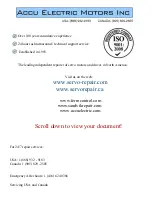
2
as possible. Avoid using bends, elbows and fittings
whenever possible. All suction connections must be
airtight, so use pipe compound on all threaded joints.
Use a suction strainer when applicable to prevent solids
and foreign matter from being drawn into the pump.
FLOW CAPACITY BY PIPE SIZE
The minimum supply pipe diameter should be selected
not to exceed a maximum water velocity of 8 ft/sec
(2.4 m/s). Use the table below for selection of the proper
supply pipe size.
CONSTANT PRESSURE INTRODUCTION
The Franklin Electric Inline System provides consistent
water pressure regulation using advanced electronics to
drive the pump/motor according to the system’s real-time
demand. The water pressure demand is under constant
monitoring through a highly accurate, heavy-duty, long-
life pressure sensor, which is included with and wired
into the system at the time of installation. By adjusting
the pump/motor speed, the Inline System automatically
reacts to any change in system demand while maintaining
a constant output pressure. The Inline System’s constant
output pressure should not fluctuate more than a PSI
or two, even though the overall system’s water flow
requirement may change dramatically. For example, a
small demand on the system, such as a bathroom faucet,
results in the motor/pump running at its lowest speed.
As greater demands are placed on the system, such as
opening additional faucets or using appliances, the
speed increases accordingly to maintain the desired
system pressure.
SYSTEm DIAGNOSTICS
In addition to regulating pump pressure and accurately
controlling motor operation, the Inline System
continuously monitors system performance and can
detect a variety of abnormal conditions. In many cases,
the controller will compensate as needed to maintain
continuous system operation. But if there is high risk
of equipment damage, the controller will protect the
system by shutting itself down. To help identify that there
is a problem with the system (which includes incoming
water and electricity from the utility company) the Inline
System will display that there is a fault condition. See
Troubleshooting Section for fault codes. If possible,
the controller will try to restart when the fault condition
subsides.
INSTALLATION
LOCATION OF THE INLINE CONSTANT
PRESSURE SYSTEM
Decide on a location for the pump installation that
is suitable based on the enclosure rating of the
Inline System.
WARNING
Liquid tight conduit and fittings must be
used to maintain NEMA 4 rating.
Choose a clean, well-ventilated location that provides
protection from freezing, flooding, and excessive heat.
In addition, it should provide access for servicing and
allow convenient draining of the pump, tank, and service
pipes. A prepared foundation is not essential, provided
the surface is hard and level. It can be mounted in any
orientation depending on the space available.
NOTICE: installation in direct sunlight can reduce system
power and reduce drive life.
PLUMBING, PIPING AND HOSES
In general, keep the suction and discharge lines as large
Minimum Pipe Diameter
Maximum Flow rate GPM
1/2"
4.9 (18.5 LPM)
3/4"
11.0 (41.6 LPM)
1"
19.6 (74.2 LPM)
1-1/4"
30.6 (116 LPM)
1-1/2"
44.1 (167 LPM)
WATER SUPPLY REQUIREMENT
The Inline System is not designed to draw/lift water
from a source below the pumping unit. There is not an
incoming flow requirement, other than that the system
needs to be supplied with a constant supply of water
to keep the unit completely full of water at all times. It is
recommended that the system be supplied with inlet line
¾” diameter or larger.
INCOMING PRESSURE REQUIREMENT
The Inline System is designed to operate at minimum
incoming pressures as low as 3 PSI (0.2 bar). When used
on a cistern the incoming pressure requirement is waived;
but a water level must be maintained in the cistern to
prevent a vortex from forming.
SUCTION PIPING
When the pump is located at a distance from the water
source, the suction piping may have to be increased
in diameter to reduce friction loss. The friction loss in a
system increases:
1.) As the flow rate increases
2.) As the piping size decreases
Refer to the included Inline System’s performance tables
(Appendix 1) and friction loss tables (Appendix 2) to
determine the amount of head lost for a given application.
DISCHARGE PIPE SIZES FOR INSTALLATION
When the pump is located at a distance from points of
water use, it is necessary to increase the discharge pipe
size in order to reduce friction loss. The friction loss in a
system increases:
1.) As the flow rate increases
2.) As the piping size decreases































